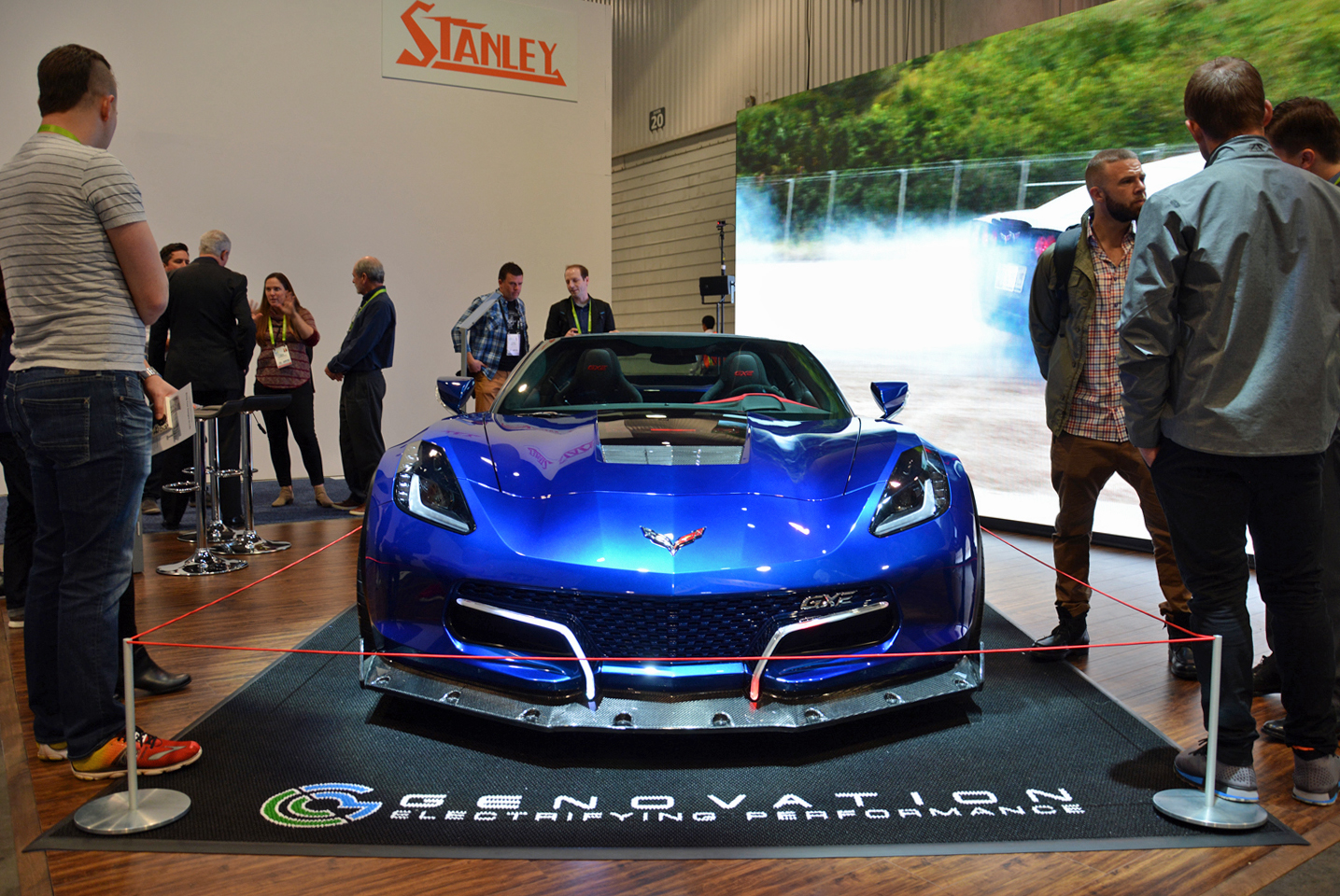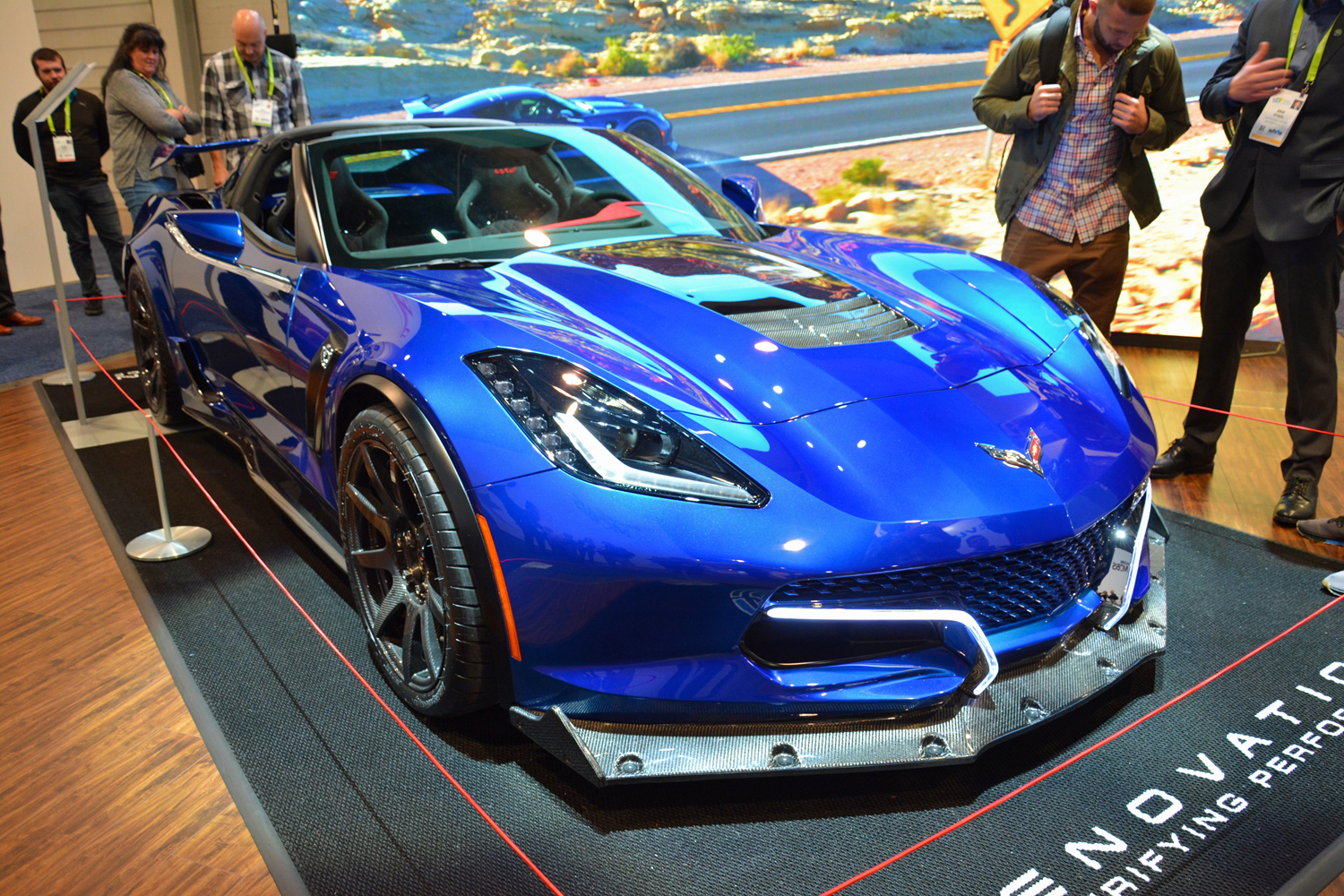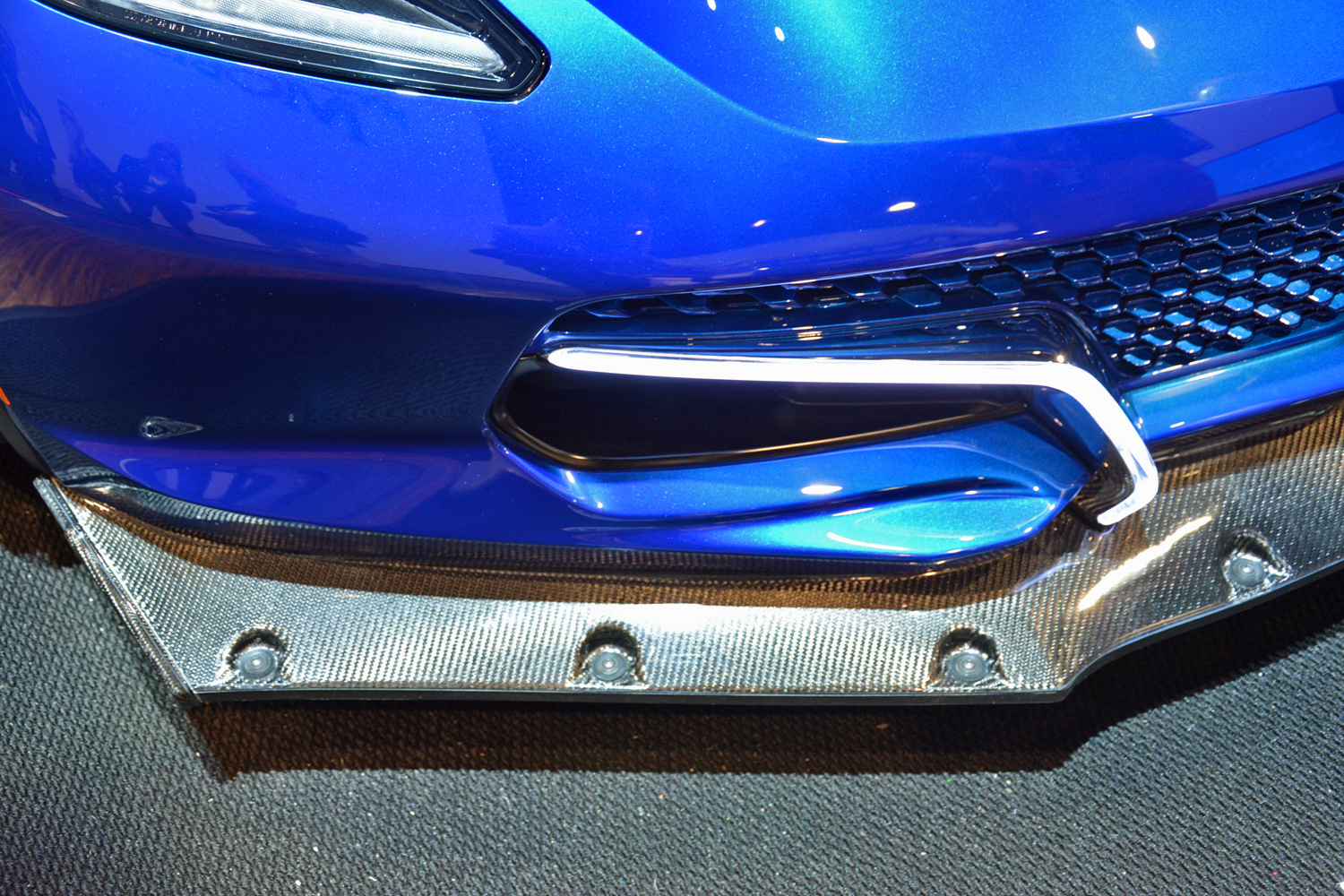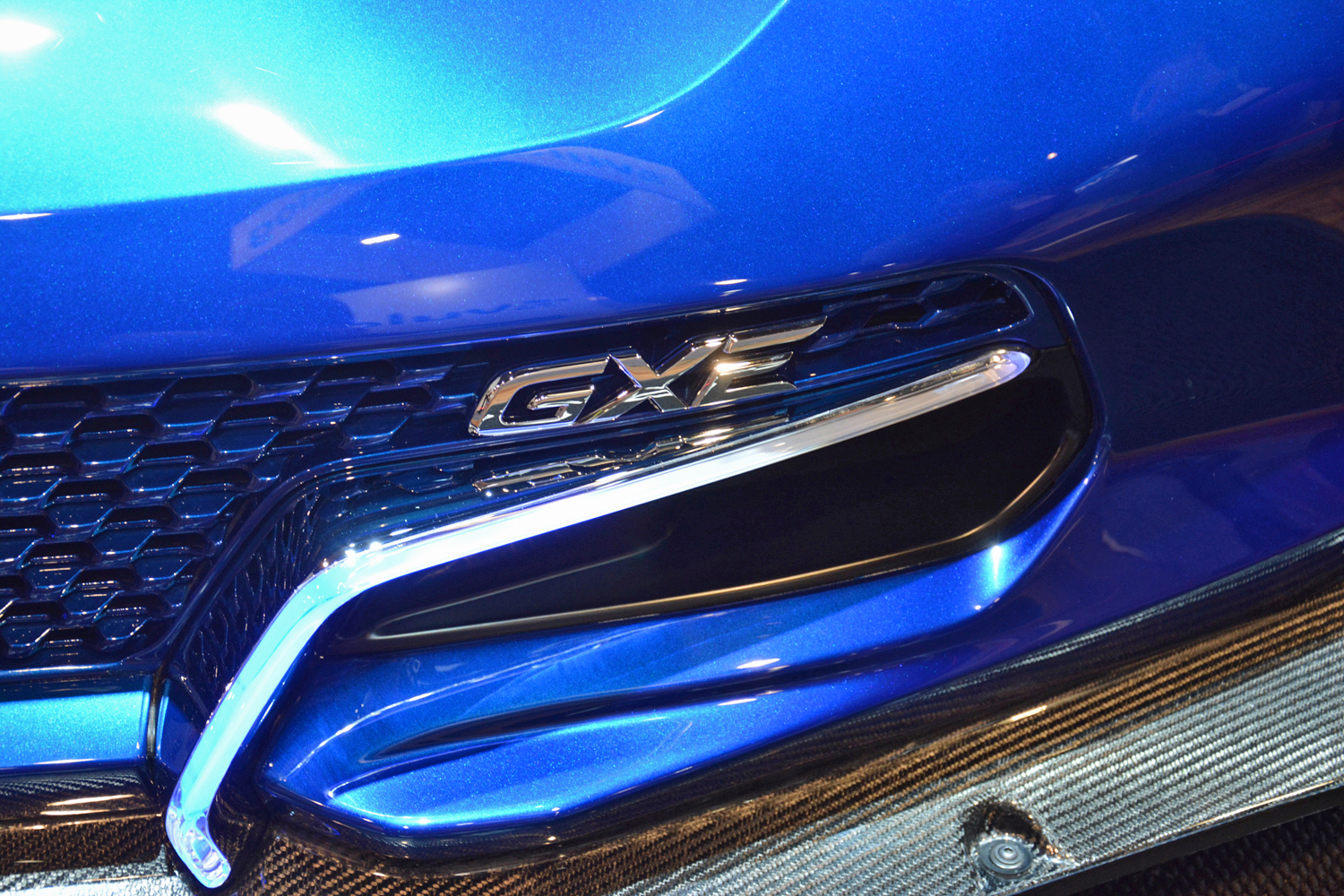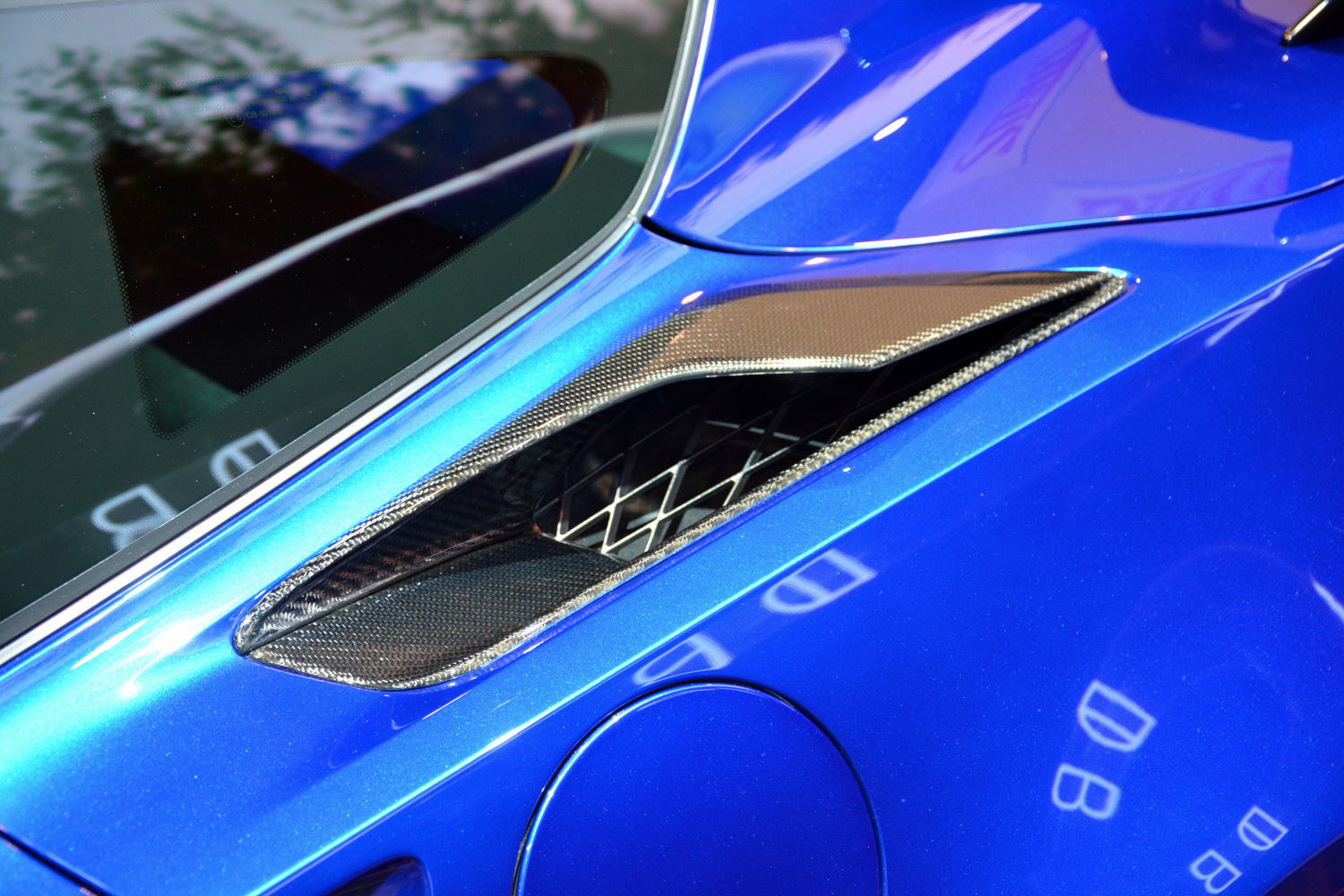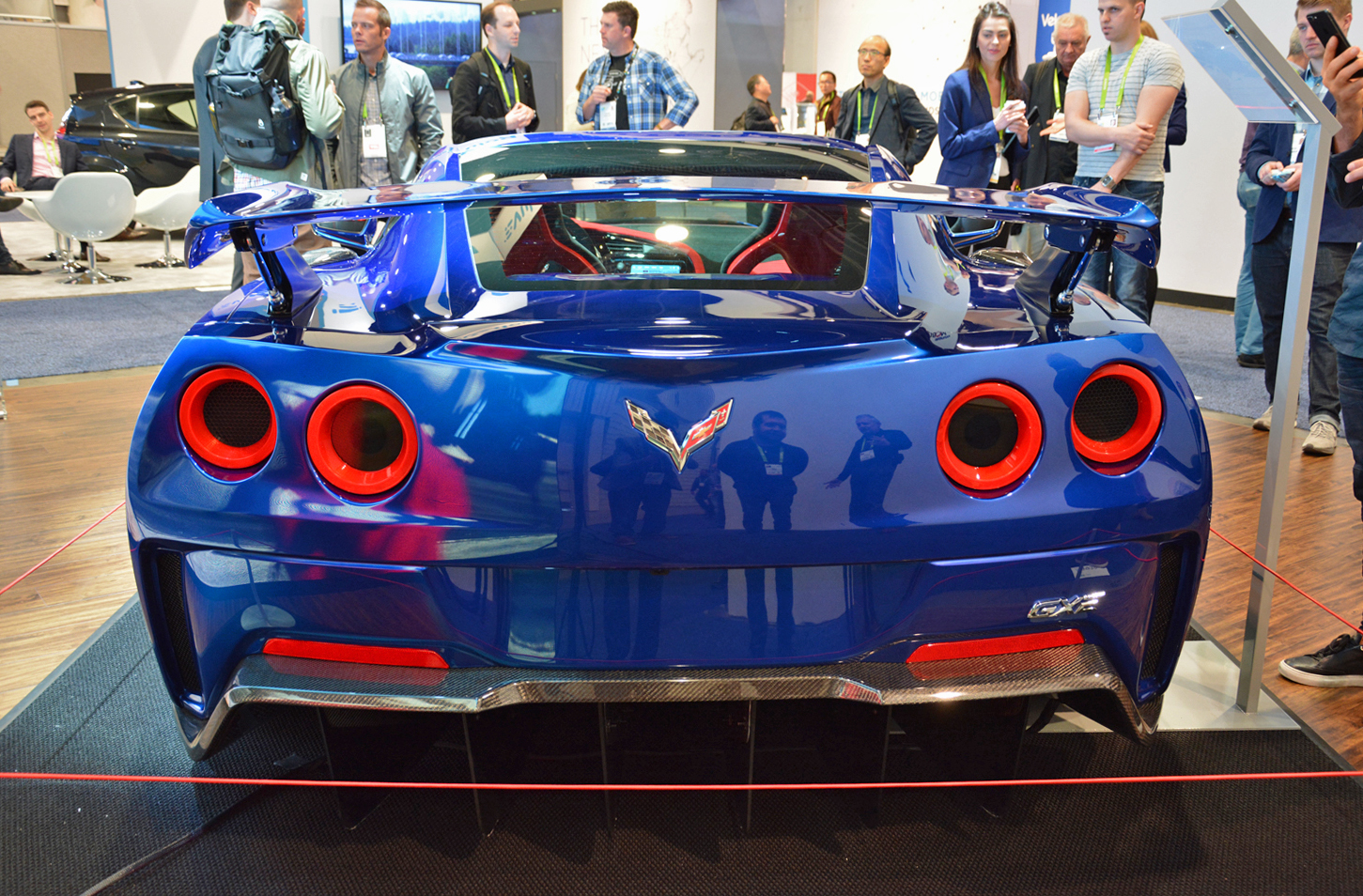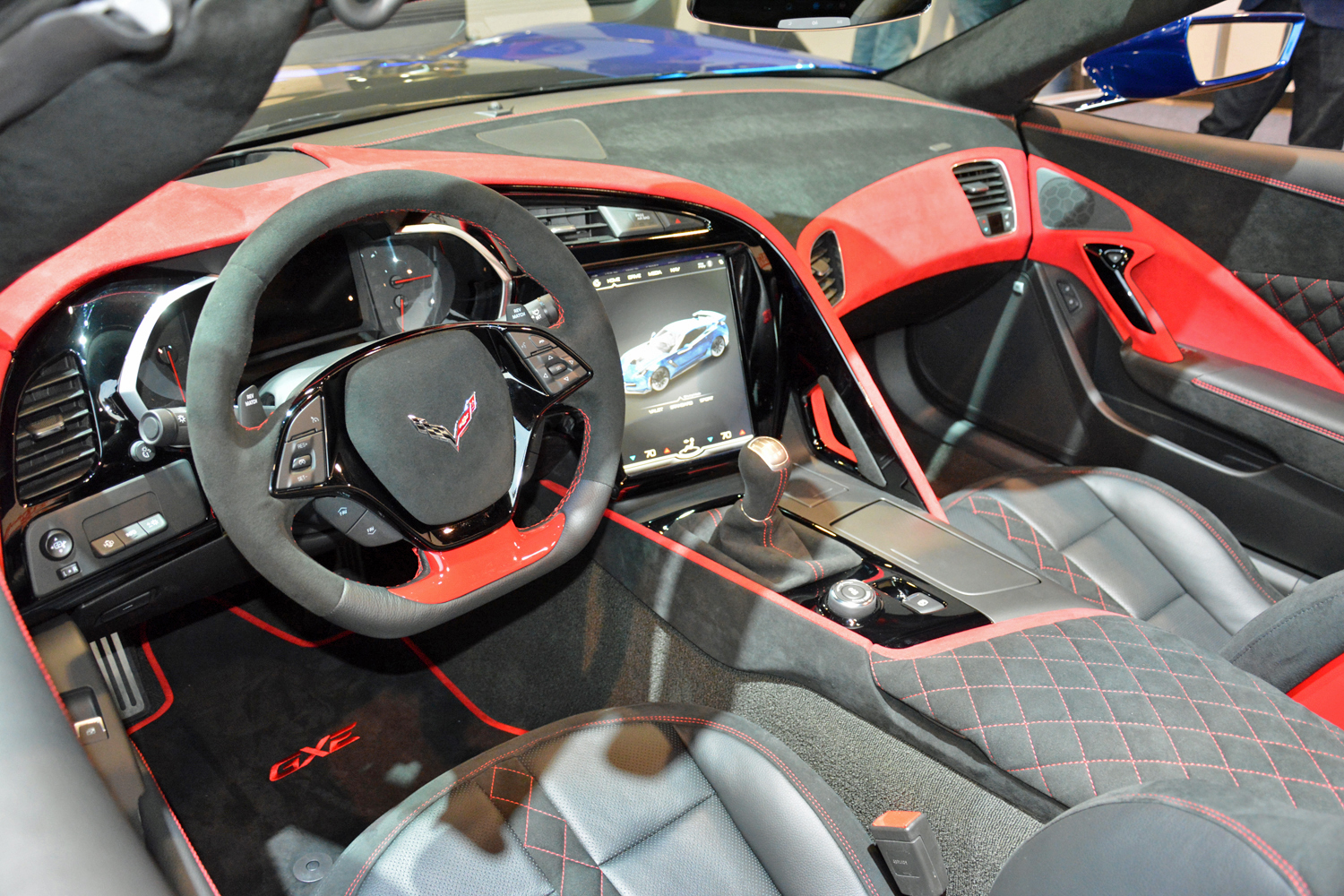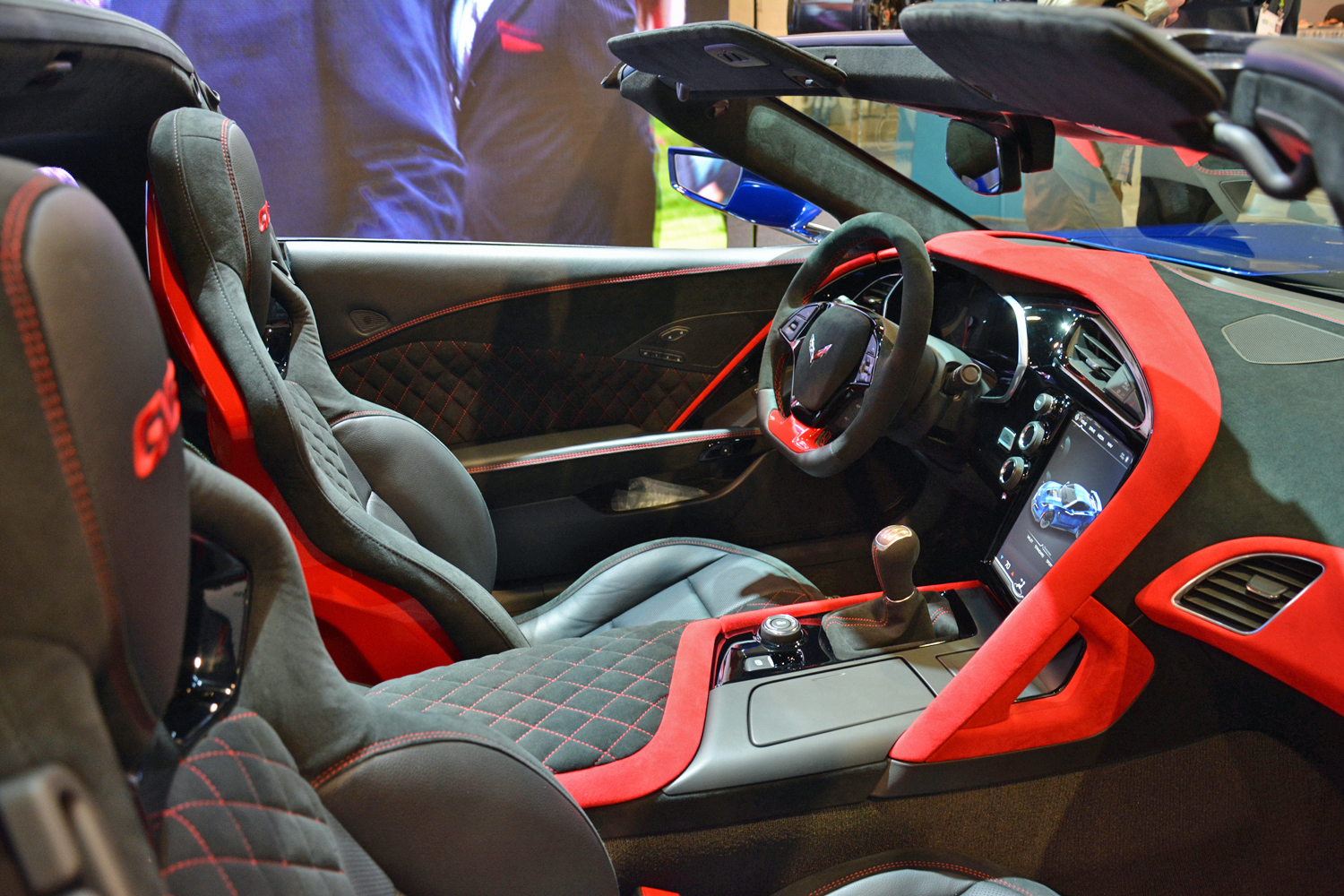With the notable exception of early examples, the Chevrolet Corvette has always used a big, powerful V8 engine. Maryland’s Genovation (which bills itself as “The Green Car Company”) wants to change that by building an electric Corvette with more power under the hood than the Dodge Challenger Hellcat. Named GXE, the firm’s latest battery-powered ‘Vette made its debut at the Consumer Electronics Show (CES) in Las Vegas this week.
Genovation started with a seventh-generation Corvette, the one currently sitting on dealer lots. The company ripped out the eight-cylinder engine and replaced it with a pair of electric motors that join forces to provide over 800 horsepower and 700 pound-feet of torque. To put those figures into perspective, Dodge’s Challenger Hellcat boasts 707 horses and 650 lb-ft of twist. The latest ZR1 — the most powerful street-legal Corvette built by the factory — makes 755 hp and 715 lb-ft. of torque.
The motors draw electricity from a 60-kWh battery pack to send the GXE from zero to 60 mph in under three seconds and on to a top speed of over 220 mph. The downside is that the battery pack only holds enough electricity for 130 miles of range, according to Motor1, which isn’t enough for the GXE to qualify for the coveted “long-range” label. Adding a bulky battery gives the Corvette a perfect 50/50 weight distribution, however.
An array of minor visual modifications set the GXE apart from the regular, gasoline-slurping Corvette Grand Sport on which it’s based. Look closely and you’ll notice a brand-specific front end and an updated rear fascia with a set of four round lights that channel the model’s heritage. Genovation told Digital Trends the example displayed on the show floor boasts an optional body kit that includes an immense spoiler out back.
The Genovation GXE isn’t a wild, unattainable concept car — not quite. It’s headed to production but the Maryland-based company will cap availability at only 75 units, presumably to maintain a sense of exclusivity. Pricing starts at $750,000 and deliveries won’t start until the end of 2019.
Tesla’s second-generation Roadster, tentatively due out in 2020 with a $200,000 starting price, looks like a real bargain compared to the GXE. So does a Lamborghini Aventador S, for that matter. And yet, Digital Trends learned Genovation received “a serious lead” less than 24 hours after unveiling the car at CES. One down, 74 to go.
Updated by Ronan Glon: Added live images, details about the company’s first sale.
